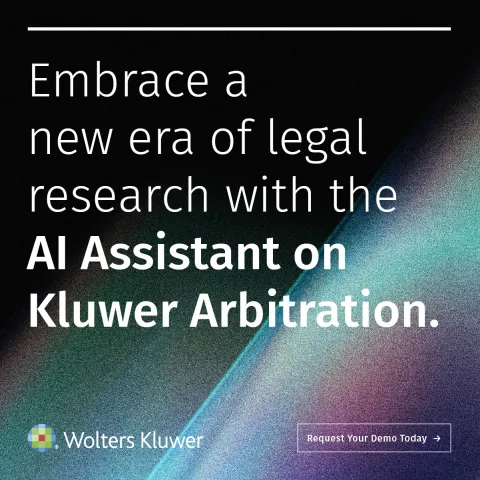What If Mediation Science Originated In The Real World?
February 4, 2019
Early in Sir Arthur Conan Doyle’s 1891 short story A Scandal in Bohemia, Sherlock Holmes gives Watson a lecture on the difference between seeing and observing. To test how well Watson understood, Holmes hands him an unaddressed, undated, anonymous letter that had just arrived on the doormat. It announced that an unnamed visitor would shortly arrive to consult Holmes, perhaps wearing a mask. Watson read it, declared it to be mysterious, and asked Holmes what it meant. The great detective replied: I have no data yet. It is a capital mistake to theorize before one has data. Insensibly, one begins to twist facts to suit theories instead of theories to suit facts.
Of course all mediators apply this wisdom when they start and progress a case. Questioning, listening, noting, delving, querying, testing, clarifying, re-questioning, never assuming. Data provides the power that enables a mediator to assist the parties toward a mutually acceptable outcome. But does it stop there? When it comes to skills and techniques, could the data that is currently available be greatly improved?
The current body of mediation research data that underpins mediators’ skills and techniques is highly fragmented. Most has been conducted on a small national or local scale by individual provider and academic institutions. The data is often based on statistics, surveys and class exercises with available participants, such as trainees and students. These controlled laboratory studies by scholars and service providers are typically cost-efficient and fast, enabling relatively easy analysis. They have been crucial in the early development of mediation. However, as commentators have noted, the classroom behavior of students and trainees, not to mention surveys, can differ markedly from action in the real world1, challenging the robustness of the data.
The more accurate, but also more difficult, way to conduct research is out in the field, in live action. Field research is largely based on actual observations of the live action by skilled researchers. The quality of the results, once analyzed, is more credible than from lab studies. Unlike lab work with students and trainees, researchers in the field cannot establish, control and manipulate the factors and variables that come into play. This means that the results need to be assessed differently to establish a true correlation between certain mediation techniques and specific outcomes. There has been little real field research in mediation because it is costly, complicated and parties need to allow the presence of a researcher.
But as we start a New Year, soon a new decade, let’s dare to be a bit adventurous.
What if a vast range of mediation skills and techniques could be radically improved by new data derived from large-scale national and international field research?
What if mediation field research could happen in a coordinated manner, maintaining a critical level of universal definitions that allows comparison of findings, thus avoiding duplication of effort and cost, accelerating the generation of a truly credible global body of “mediation science”, overcoming the management and cost considerations that currently spook this prospect?
What if data from synchronized field research really could be made freely available online to assist mediators select the processes and tools that would be most likely to benefit a wide range of circumstances - instead of having to rely only on a haphazard combination of training, instinct, experience, experimentation and habit?
What if, to give one example of potentially hundreds, field research in a particular situation could determine the statistical probability of a certain style of mediation, or a particular hybrid process, being more or less likely to meet the needs of the parties? Or, to give another example, what if field research could establish the most likely successful approach, process or questioning sequence where the parties have different cultural backgrounds?
What if field research could establish the optimal time to mediate in certain situations?
What if the financial value of a conventional mediation, or a hybrid process like Arb-Med-Arb, or other things that are known or assumed to be significant but still remain largely unproven, could be credibly established by fieldwork data?
What if the costs of large-scale coordinated field research could be funded by grant-giving institutions, governments and the prime beneficiaries of such research who would be motivated to allow the presence of researchers to observe mediations?
These may be rhetorical questions, but we should not dismiss them as fanciful. If more targeted field research really would generate great new value for parties and mediators, and therefore absolutely needs to be done, why not just get on and do it?
Should a conversation now start about the value and do-ability of these propositions?
In the 1970s and 80s, researcher Neil Rackham devised and led the largest ever field-based study into successful techniques in the art of selling. His work focused on questioning techniques. It took 12 years and cost the current equivalent of $30 million. Rackham’s books derived from his field study data, such as SPIN Selling, are among the most sold sales books ever. In terms of more and better sales of products and services worldwide, the value generated by the field studies of Rackham and his associates is inestimable. His work is also applicable to negotiators and mediators2.
Has the mediation world spent too long developing lab-based facts to suit its theories?
Might it start to hone new theories of mediation excellence from field-based facts?
Please take a moment to provide your thoughts by way of comment on this post. If you prefer to comment in private, my email address is on my website. If, as I hope, this subject stirs a reaction, I will try to summarize the range of opinions with a further post.
- 1 See the meta-analysis of 490 articles on business negotiation between 1995 and 2015 in Two Decades of Business Negotiation Research: an overview and suggestions for future studies by Prof. Henrik Agndal, University of Gothenburg
- 2See: What Negotiators Can Learn from Modern Sales Theory by Ava J. Abramowitz (practicing mediator), Volume 1, Chapter 31, The Negotiator’s Desk Reference (2017) ed. Chris Honeyman and Andrea Kupfer Schneider
You may also like








Greg Rooney
Hi Michael Your article raises a number of important issues that has bedevilled the modern mediation profession for some time. Principally, what makes a mediator. If I understand you correctly you hope that real-world research will find the magic bullet/ the key that unlocks the door to “Data” that ??? Not sure what then follows. What does this data do? Is it a magic formula that can be applied or is it a lightning rod of inspiration to be pased and analysed. A number of Australian academics have proposed similar views in trying to equate measurement with understanding. It is a very Newtonian form of thinking. I have written a critique on this Newtonian approach pointing out that in the complexity of human relationships, within which mediators operate, data is never repeatable. This has been highlighted by the replication movement which has thrown into doubt the validity of the much of the so called evidence-based research and observational case studies carried out in the social science field. This is a great problem for theorists and academics and for your argument. See https://www.mediate.com/articles/rooney-mediation-mediator.cfm In my view there is a better answer to what makes a mediator and it comes from complexity theory. I have drawn a lot of inspiration and understanding from Prof Dave Snowden's work on his Cynefin approach see https://www.liv.asn.au/Staying-Informed/LIJ/LIJ/December-2017/A-new-approach Channelling Sir Arthur Conan Doyle practising mediators especially those using the facilitative approach operate best by allowing data to emerge through the process of probing first and then responding :- “They will probe first and then sense and respond to the reaction and they will try and suspend any attachment to their memories, desires and the need to understand what is happening and will try and not be deterred by blockages and impasses. They will allow their intuition to guide them through the session rather than letting the mechanical side of their brain be the master”. (From the above mediate.com article). Thank you Michael for starting this conversation. It is an important one at this time as we slowly see the emergence of mediation as a fully recognised mediation profession.
Paul M. Lurie
I agree. The best techniques of mediation can be identified from reliable data and become the basis for techniques for mediators to use. A good example is in the medical industry. Doctors use surgical techniques based on successful outcomes reducing illness based on data published in peer review journals. Six years ago we created the Guided Choice Mediation project for exactly this reason. Our working hypothesis is that users consider the best mediators can cure the disease of an unresolved dispute earlier and with less expense. Mediation research that does exist tends to focus on just settlements and not when they occur. The Global Pound Conference supplied data indicating the correctness of our thesis. We are now gathering and teaching techniques that provide potential cures that can be verified by data. Further research will confirm that the optimal time to hire a mediator is as soon as possible, even if the parties are not ready to start a traditional mediation involving settlment negotiations. During the pre-negotiation phase, the mediator acts as a process faciliator helping to confidentially diagnose the causes of impasse and suggesting the most efficient settlement techniques.